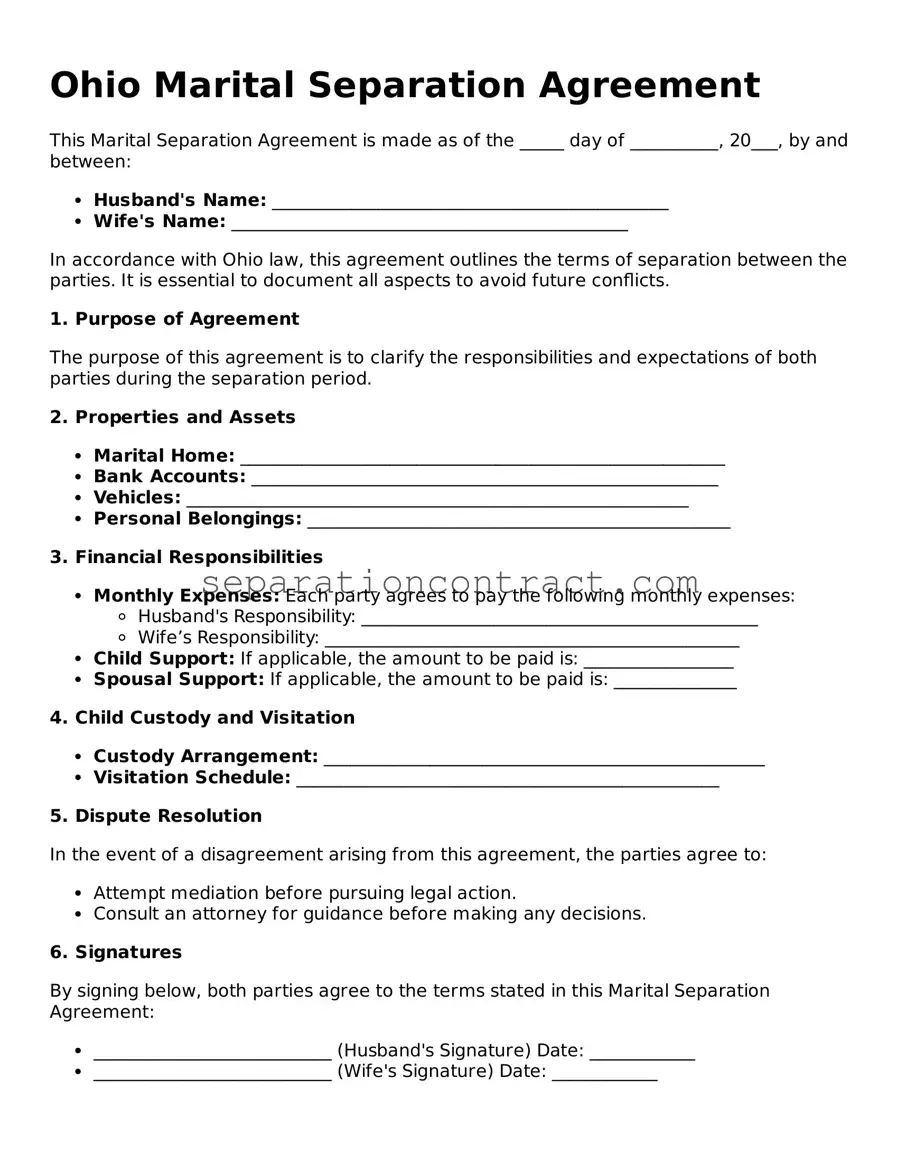When completing the Ohio Marital Separation Agreement form, individuals often overlook crucial details that can lead to complications down the line. One common mistake is failing to provide accurate personal information. This includes not only names and addresses but also the correct date of marriage and separation. Inaccuracies can create confusion and may delay the processing of the agreement.
Another frequent error is neglecting to address all assets and debts. It’s essential to list both parties’ property, including real estate, vehicles, and personal belongings. Additionally, any debts incurred during the marriage should be documented. Omitting significant assets or debts can result in disputes later, potentially complicating the separation process.
Many people also make the mistake of not being specific about child custody and support arrangements. Vague language can lead to misunderstandings. Clearly outlining the custody schedule, visitation rights, and financial support obligations is critical. This clarity helps ensure that both parties have a mutual understanding of their responsibilities moving forward.
Additionally, individuals often forget to include provisions for future changes. Life circumstances can shift, and it’s wise to plan for potential modifications to the agreement. For example, including a clause that allows for revisiting the terms of child support as income changes can save both parties from future conflicts.
Finally, a common oversight is not having the agreement reviewed by a legal professional. While it may seem straightforward, a lawyer can provide valuable insights and ensure that all legal requirements are met. This step can prevent issues that arise from improperly filled forms or unenforceable clauses, ultimately protecting both parties’ interests.
